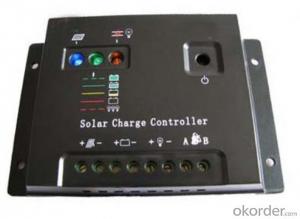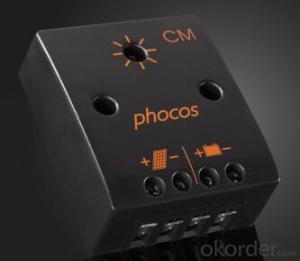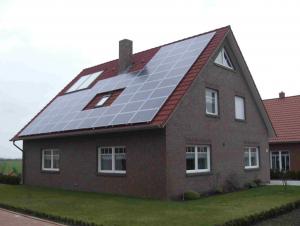Solar Water Pump Controller for Solar System
- Loading Port:
- Shekou
- Payment Terms:
- TT OR LC
- Min Order Qty:
- 20 unit
- Supply Capability:
- 800000 unit/month
OKorder Service Pledge
OKorder Financial Service
You Might Also Like
Products
Solar Pumping System can be applied to daily use (ground water), agricultural irrigation, forestry irrigation, desert control, pasture animal husbandry, water supply for islands, wastewater treatment engineering, and so on. Solar water pump System is dispensed with energy storing devices, and stores water instead of electricity. It improves the reliability of the device, at the same time, it lowers the construction and maintenance costs of the irrigation system dramatically.
In recent years, with the promotion of the utilization of new energy resources, Solar Pumping System is more and more used in municipal engineering, city centre squares, parks, tourist sites, resorts and hotels, the landscapes and fountain irrigation systems in the residential areas.
Technical Features
Optimization of Single Pump System
A single solar irrigation system consists of only one pump, a power -matched solar array and an inverter . The aim of optimization is to reduce the amount of PV modules as much as possible on the premise of filling the requirement of head and capacity. The rotational speed of pump is regulated according to the irradiation on the solar array; when the sunlight reaches its peak, the pump runs at the rated speed, and the output approaches the peak power of the solar array; when the sunlight is less abundant, the speed of pump varies bellow the range of the rated speed; when the speed as low as the capacity becomes zero, the solar pumping system stops working. So, there are big differences between solar irriation systems and traditional pumping systems in system design, and the system should be optimized according to the requirements of head, capacity, and local conditions of sunlight.
•Determine the optimal average daily operating time and the range of speed governing.
•Choose the optimal head and capacity of the pump.
•Determine the maximum power of PV modules, the best working voltage and method of connection.
Optimization of Multi-pump Systems:
There are several pumps in a multi-pump system. The pumps can be driven either by only one high-power inverter, or by several matching inverters. In the case of large capacity demand, the operation of the multi-pump system is more flexible. By switching solar arrays and pumps, all of the pumps run in MPPT mode when the sunlight is abundant, while some pumps will be shut down and all solar arrays supply power intensively for the rest running pumps when irradiation is weak. Based on the optimization of single pump system, the range of speed can be further optimized, and the photovoltaic(PV) pumping system always works with high efficiency.
Product Specifications
Model | Rated Power ( kW ) | Rated Voltage ( V ) | Head ( M ) | Daily Flow ( ㎥/ D ) |
PS370 | 0.37 | 220 | 20-47 | 20-1 |
PS550 | 0.55 | 220 | 15-70 | 40-1 |
PS750 | 0.75 | 220 | 6-81 | 100-1 |
PS1100 | 1.1 | 220 | 8-93 | 100-1 |
PS1500 | 1.5 | 220 | 7-128 | 130-1 |
PS2200 | 2.2 | 380 | 12-163 | 130-1 |
PS3000 | 3 | 380 | 9-187 | 250-10 |
PS4000 | 4 | 380 | 6-225 | 500-10 |
PS5500 | 5.5 | 380 | 10-172 | 500-20 |
PS7500 | 7.5 | 380 | 15-237 | 500-20 |
PS9200 | 9.2 | 380 | 20-140 | 500-40 |
PS11000 | 11 | 380 | 23-159 | 500-40 |
PS13000 | 13 | 380 | 27-189 | 500-40 |
PS15000 | 15 | 380 | 31-208 | 500-40 |
PS18500 | 18.5 | 380 | 39-143 | 500-100 |
PS22000 | 22 | 380 | 25-86 | 700-210 |
PS26000 | 26 | 380 | 30-105 | 700-210 |
PS30000 | 30 | 380 | 35-125 | 700-210 |
PS37000 | 37 | 380 | 40-150 | 700-210 |
PS45000 | 45 | 380 | 50-180 | 700-210 |
PS55000 | 55 | 380 | 65-200 | 700-210 |
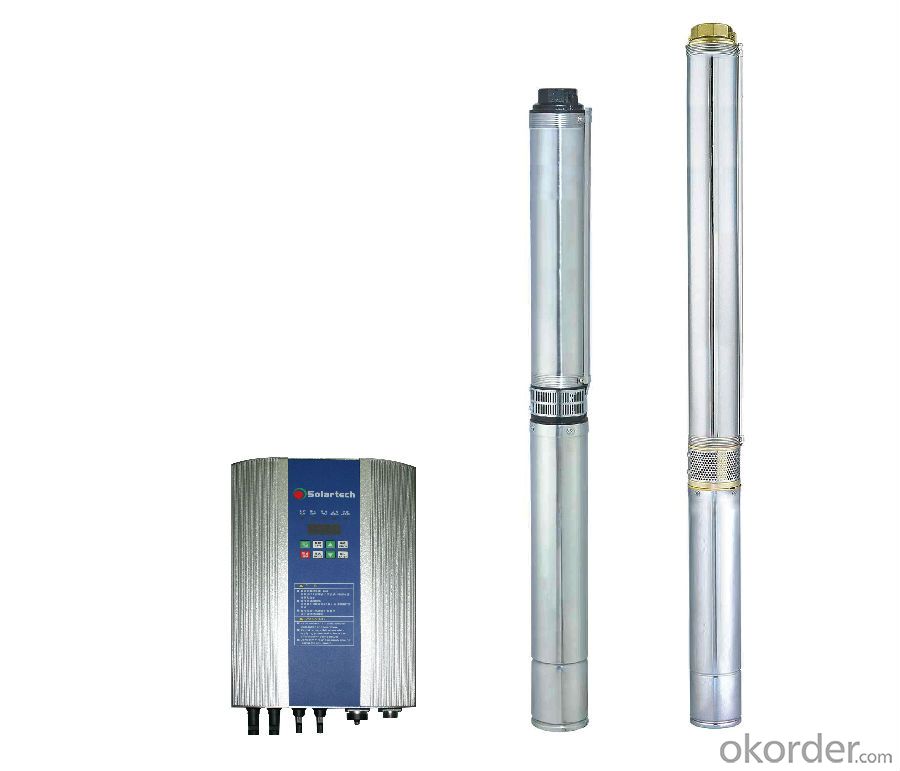
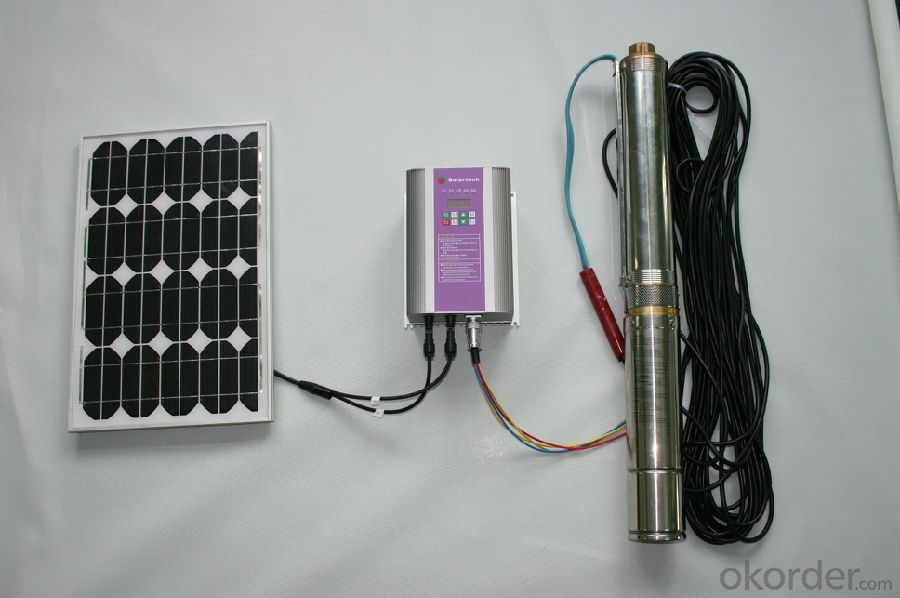
- Q:What is the discharge current rating of a solar controller?
- The discharge current rating of a solar controller refers to the maximum amount of current that can be drawn from the controller's battery bank to power devices or appliances. This rating is typically specified by the manufacturer and can vary depending on the model and capacity of the solar controller.
- Q:Can a solar controller be used with a solar-powered marine system?
- Yes, a solar controller can be used with a solar-powered marine system. A solar controller regulates the voltage and current from the solar panels to ensure efficient charging and protection of the batteries. It is an essential component for managing the energy flow in a solar-powered marine system, helping to maximize the system's performance and prolong the lifespan of the batteries.
- Q:Are there any maintenance requirements for solar controllers?
- Yes, solar controllers typically have minimal maintenance requirements. It is recommended to regularly inspect and clean the solar controller to ensure there are no obstructions or buildup that could affect its performance. Additionally, checking the connections and wiring for any loose or damaged parts is advisable. Overall, solar controllers are designed to be durable and require very little maintenance.
- Q:What is the maximum distance between the solar panels and the solar controller?
- The maximum distance between the solar panels and the solar controller can vary depending on the specific system, but it is generally recommended to keep it within 100 feet (30 meters) to minimize power loss and maximize efficiency.
- Q:What is the meaning of the 30A solar controller?
- The maximum current is 30A
- Q:Can a solar controller be used with both 12V and 24V systems?
- Yes, a solar controller can be used with both 12V and 24V systems. Most solar controllers are designed to be compatible with a range of system voltages and can automatically adjust the charging parameters accordingly. However, it is essential to check the specifications of the specific solar controller to ensure it supports both 12V and 24V systems.
- Q:Do solar controllers have built-in battery temperature compensation?
- Yes, solar controllers often have built-in battery temperature compensation. This feature helps to ensure optimal charging and prolong the lifespan of the batteries by adjusting the charging voltage based on the temperature of the battery.
- Q:How does a solar controller handle battery capacity testing?
- A solar controller handles battery capacity testing by periodically monitoring the voltage and current levels of the battery during charging and discharging cycles. It uses advanced algorithms to analyze this data and calculate the battery's state of charge (SOC) and state of health (SOH). The controller also ensures that the battery is not overcharged or discharged beyond safe limits, protecting it from potential damage.
- Q:Can a solar controller be used in a solar-powered Mars colonization mission?
- Yes, a solar controller can be used in a solar-powered Mars colonization mission. A solar controller is an essential component that regulates the voltage and current flowing from the solar panels to the batteries, ensuring proper charging and preventing overcharging. It plays a crucial role in maintaining the efficiency and longevity of the solar power system, which would be vital for sustaining power supply in a Mars colonization mission where solar energy is the primary source.
- Q:Can a solar controller be used with solar panels of different colors?
- Solar panels of different colors can indeed be used with a solar controller. The functionality of the solar controller remains unaffected by the color of the panels. The primary objective of a solar controller is to regulate the charging process of batteries linked to the panels. It carefully monitors the voltage and current derived from the panels and ensures the batteries are charged in the safest and most efficient manner. The color of the solar panels merely pertains to aesthetics and has no bearing on performance or compatibility with the solar controller.
1. Manufacturer Overview |
|
|---|---|
| Location | |
| Year Established | |
| Annual Output Value | |
| Main Markets | |
| Company Certifications | |
2. Manufacturer Certificates |
|
|---|---|
| a) Certification Name | |
| Range | |
| Reference | |
| Validity Period | |
3. Manufacturer Capability |
|
|---|---|
| a)Trade Capacity | |
| Nearest Port | |
| Export Percentage | |
| No.of Employees in Trade Department | |
| Language Spoken: | |
| b)Factory Information | |
| Factory Size: | |
| No. of Production Lines | |
| Contract Manufacturing | |
| Product Price Range | |
Send your message to us
Solar Water Pump Controller for Solar System
- Loading Port:
- Shekou
- Payment Terms:
- TT OR LC
- Min Order Qty:
- 20 unit
- Supply Capability:
- 800000 unit/month
Offcanvas right
OKorder Service Pledge
OKorder Financial Service
Similar products
New products
Hot products
Hot Searches
Related keywords
















